Two girls. Conceived in the same moment. Born within minutes of each other. Indistinguishable in many ways. But for one defining difference. In the 1940s, in a society that deemed their distinctions insurmountable, their eventual separation may have seemed inevitable; that is to everyone except the twins themselves. This is the story of Judith and Joyce Scott; how they were torn apart, the pain of separation and how their undeniable bond and eventual reunion healed life-long wounds and, against all the odds, sparked the immergence of a extraordinary talent. A talent that would see one of them become a world-renowned fiber artist.
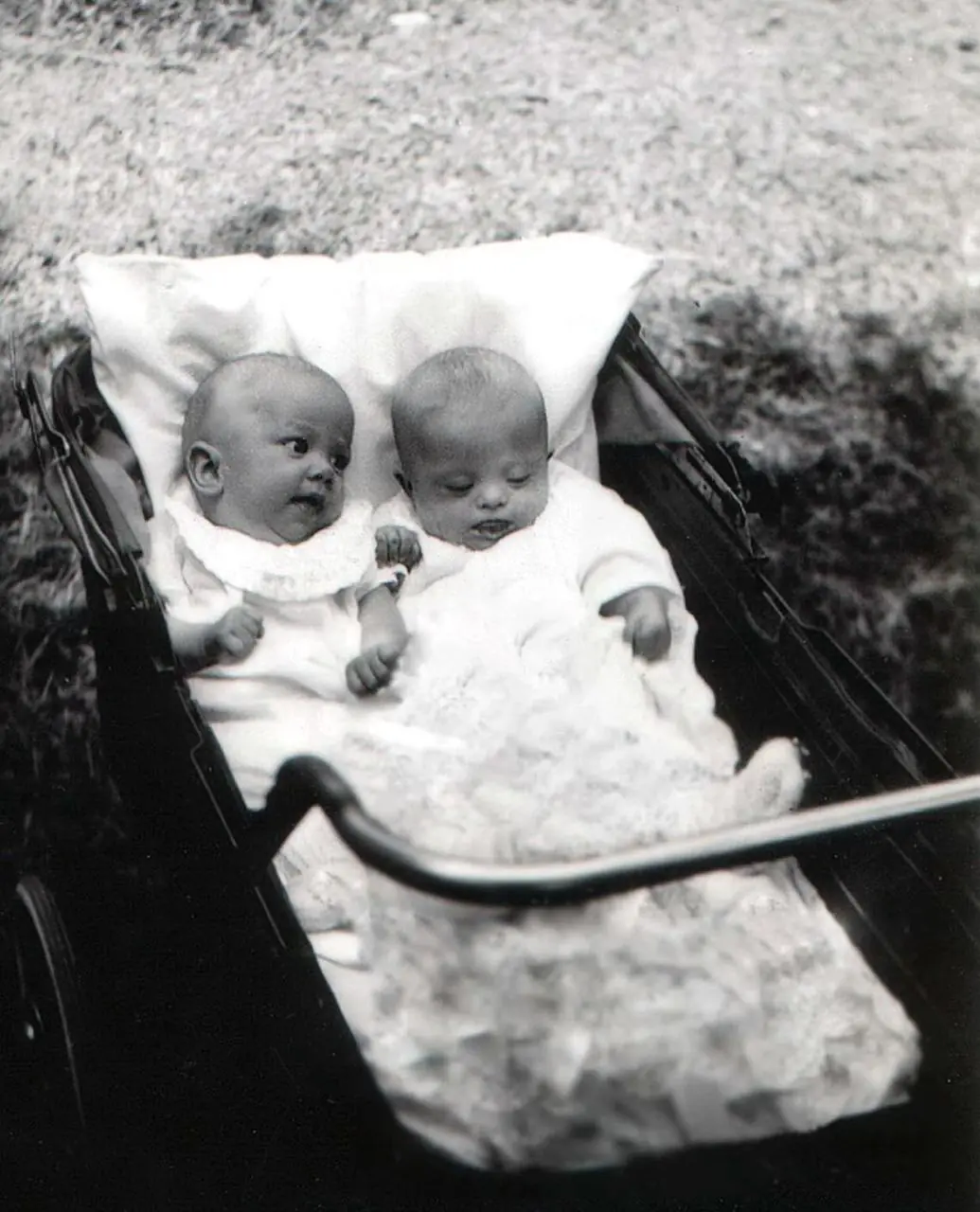
Birth and Separation
Born in 1943 into a middle-class family in Cincinnati, Ohio, Joyce Scott was a healthy baby. There was no reason not to assume that she would lead anything other than a ‘normal’ life. In fact, her life has been extraordinary, partly due to the fact that her twin sister, Judith was born with an extra chromosome.
In 2011, speaking on the BBC Culture show, Joyce explained how she and her sister were inseparable in the early years; ‘We played in the same space, slept in the same bed, we did absolutely everything together”. Their three brothers provided little distraction from each other’s company. They would while away the hours in what seemed like an idyllic existence; inventing games, digging in the sandbox and holding make-believe tea-parties.
But as the years passed, differences in their development began to manifest. When Joyce began speaking, Judith didn’t. It wasn’t until many years later that the reason for this inability to find a voice would be diagnosed; Judith had been left profoundly deaf by a bout of Scarlet fever in infancy.
Her deafness undiagnosed, Judith failed to qualify for the only public school class for children with learning disabilities. It is likely, in hindsight, that she simply couldn’t hear the questions being put to her, but the entry-test provided further evidence of Judith’s retardation and she was deemed to be ‘uneducable’.
From that point onwards, pressure from doctors and psychologists began to mount. It was practically unheard of at that time for children with severe disabilities to live with their parents. Judith’s mother, Lillian, was faced with a heart-rending decision.
In the Autumn of 1950, when the twins were 7 and a half years old, Joyce woke to find her sister gone. In the months that followed her parents descended into a state of guilt-ridden depression and despair, but nobody felt the loss more profoundly than Joyce. It was as if one half of herself had been abruptly ripped away, leaving her bereft, lonely and with an irrevocable sense of emptiness. Indeed, the remainder of her childhood became a quest to fill the void left by her sister’s absence.
Early adulthood
As a young adult, sub-consciously seeking to heal the wound left by the loss of her sister, Joyce spent her time caring for other children who had been tarnished by society with the label ‘outcast’. Even this did not bring peace.
All those years earlier, Judith had become a ward of the state of Ohio and had since been living in institutions for the disabled and discarded. These were not forward-thinking establishments and the ‘care’ administered was perfunctory at best, but often cruel and violent.
The official records state “Judith does not seem to be in good contact with her environment. She does not get along well with other children, is restless, eats messily, tears her clothing, and beats other children.” Joyce recalls another document stating that on one occasion Judith had shown an urge to join in with other children who were drawing on pieces of scrap paper, but was told she was ‘too retarded to draw’ and had her crayons confiscated.
Against the wishes of their mother, Joyce eventually sought out Judith and would visit her in the institution. Her daughter Ilana would accompany her from time to time and remembers “cold floors, people yelling. Judy was just sobbing the entire time we were there”.
The epiphany
After many years of heart-ache, Joyce took the decision, after further objections from her mother, to become Judith’s legal guardian. She describes the moment as ‘epiphanal’. It was not a straightforward process; negotiations were drawn-out and difficult. But finally in 1986, a period of deep-healing began, when Judith moved to California to live with Joyce and her family.
Creative discovery
Joyce enrolled Judith at the Creative Growth Art Centre in Oakland as a means of occupying her time; Joyce was working as a pediatric nurse so 24-hour care of her sister was impossible.
Creative Growth is a visionary arts centre where people with mental or psychological difficulties are given total artistic freedom. Joyce Scott describes it as ‘joyful’.
For nearly two years, Judith was unresponsive; she didn’t enjoy painting, sculpture or sewing. But one fiber arts workshop with the textile artist Sylvia Seventy changed all that. Finally Judith had discovered something she loved, and what’s more, something for which she had an innate talent.
She spontaneously started wrapping pieces of wood in fiber, fabric and threads and created her earliest pieces, since referred to as ‘totems’.

From then on she didn’t stop. She was constantly creating. Her process was erratic and instinctive. She would wrap thread and yarn around anything she could get her hands on; she appropriated magazines, chairs and even a bicycle wheel. It quickly became a source of communication for Judith, having been verbally and socially ‘blocked’ for most of her life. Tom di Maria, director of Creative Growth, believes she was finally ‘learning to speak’. Her early pieces were her first words.
Her gift was recognised and encouraged by the staff at the Creative Growth Art Centre and Judith was given free-reign over the studio. No object was out-of-bounds. She would work on a piece for days, weeks, even months. She became more and more focused and would not allow interruption or distraction. She also became more discerning in her selection of threads and yarns, considering various hues and shades, wrapping the treasure she had gathered until she alone decided a piece was complete. At that point she would brush her hands together and push the piece away.
But she was not only uncovering a long-hidden talent, Judith was also finding herself. Having found a voice, she became more confident. She began experimenting with extravagant clothing and accessories.
Judith Scott’s body of work
Her work-cycle was constant; five days a week for eighteen years. She produced over 200 cocoon-like sculptures in that time, many of which can be found in international museums and private collections. Some are small and intimate, others almost unmanageable in size.
Her work is an abstract reflection of her life. The colourful, idyllic childhood, the loneliness and isolation of institutional care and, above all, the connection with her sister Joyce; one piece is widely believed to represent twins reaching out to one another.
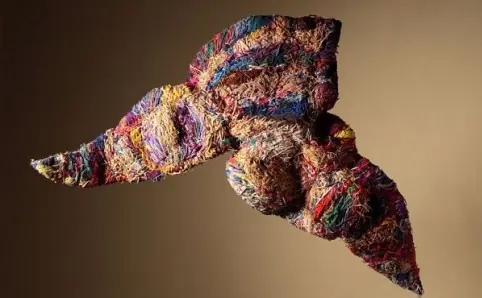
In 1999 the first exhibition of her work coincided with the release of John MacGregor’s book Metamorphosis: The Fiber Art of Judith Scott . This was instrumental in introducing her work to a much wider audience and propelled her to international recognition as an ‘outsider’ artist. Eventually though her disability became secondary to her art and her work became celebrated on its own merit.
Judith became the first ever artist with Down’s Syndrome to be featured in the San Francisco Museum of Modern Art. Her work can still be seen in permanent collections in New York City, Paris, and London.
Judith Scott passed away in 2005, living 61 years. She died in the arms of her sister Joyce.
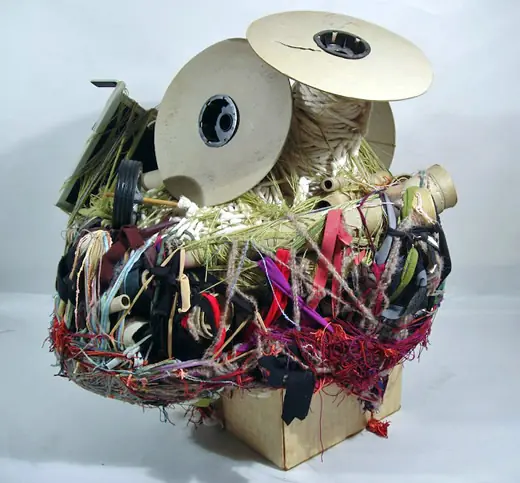
Which textile artist (living or dead) would you like to learn more about? Let us know in the comments below.
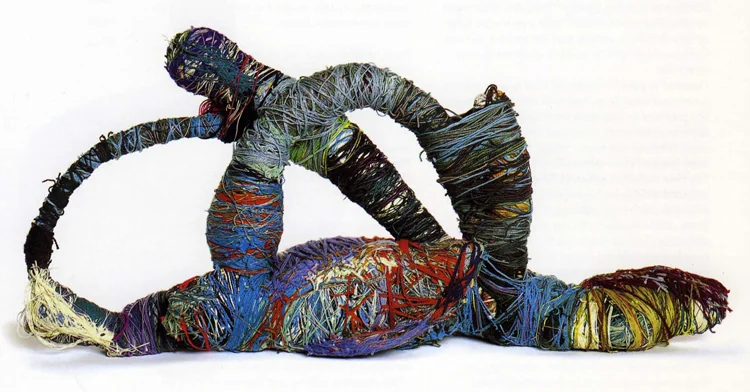
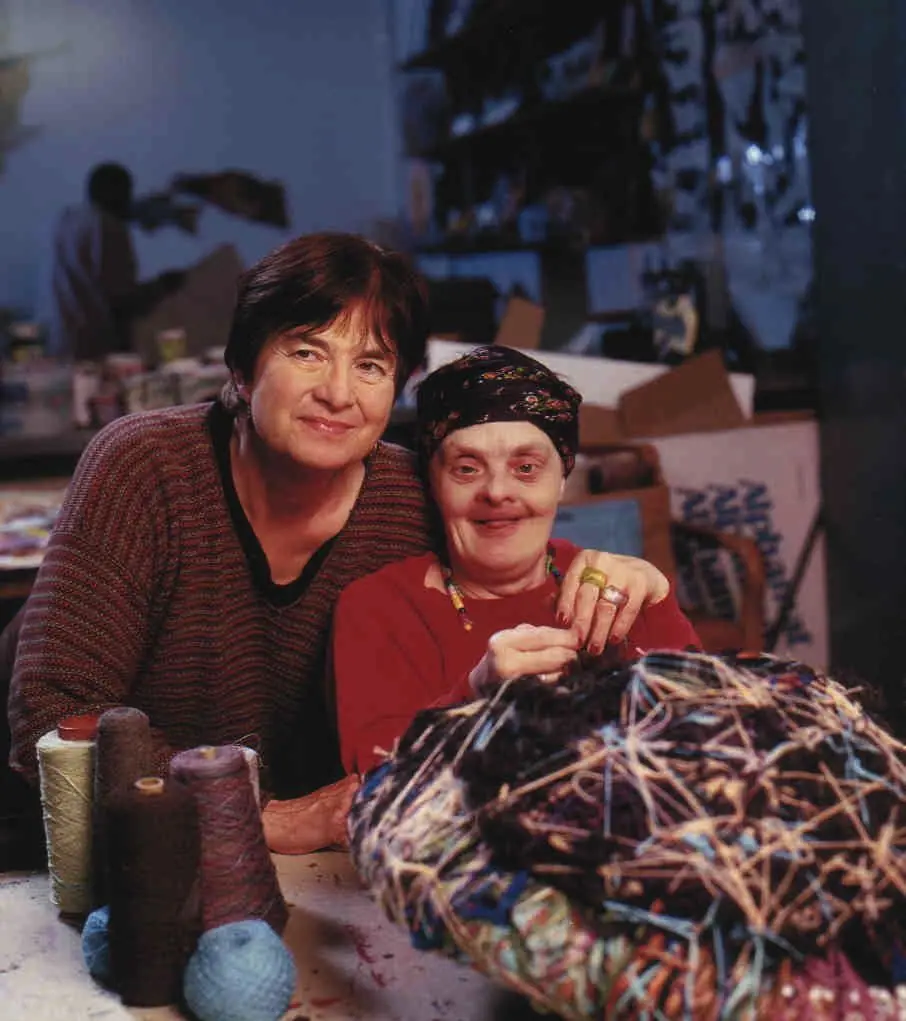
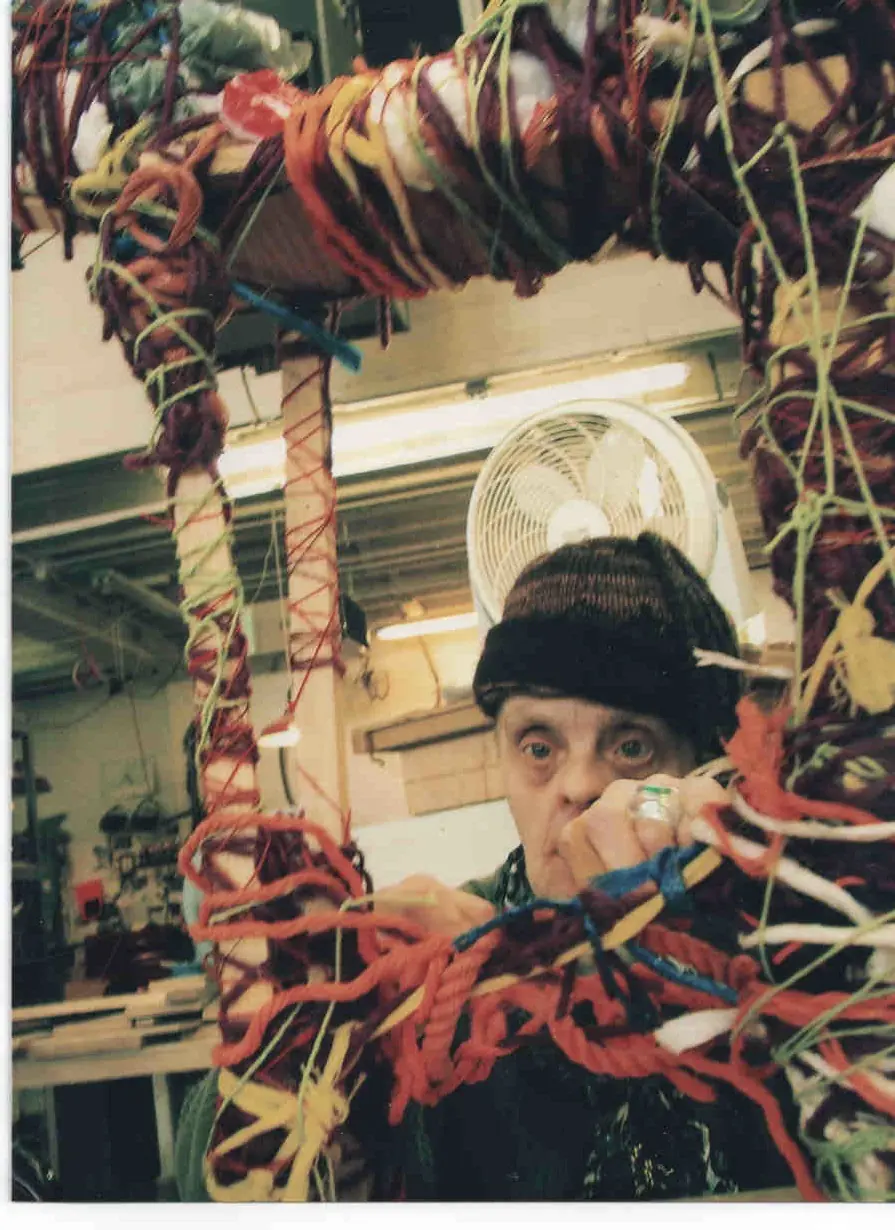
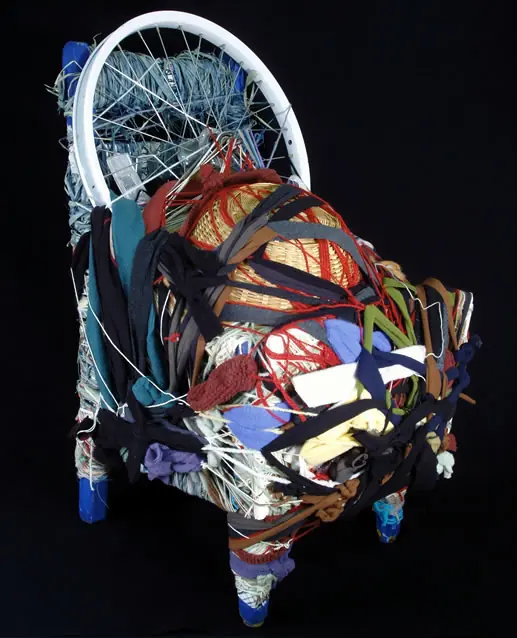

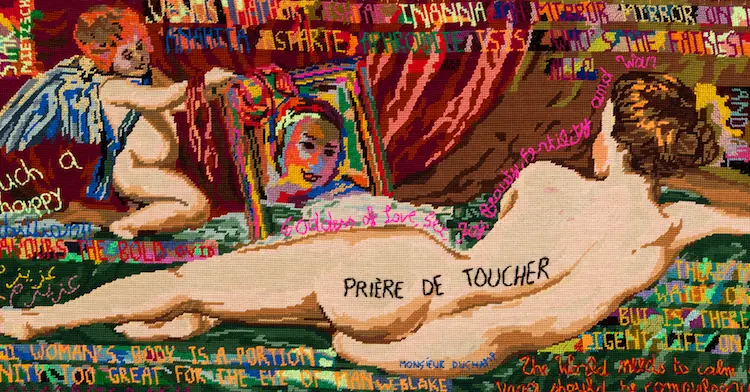
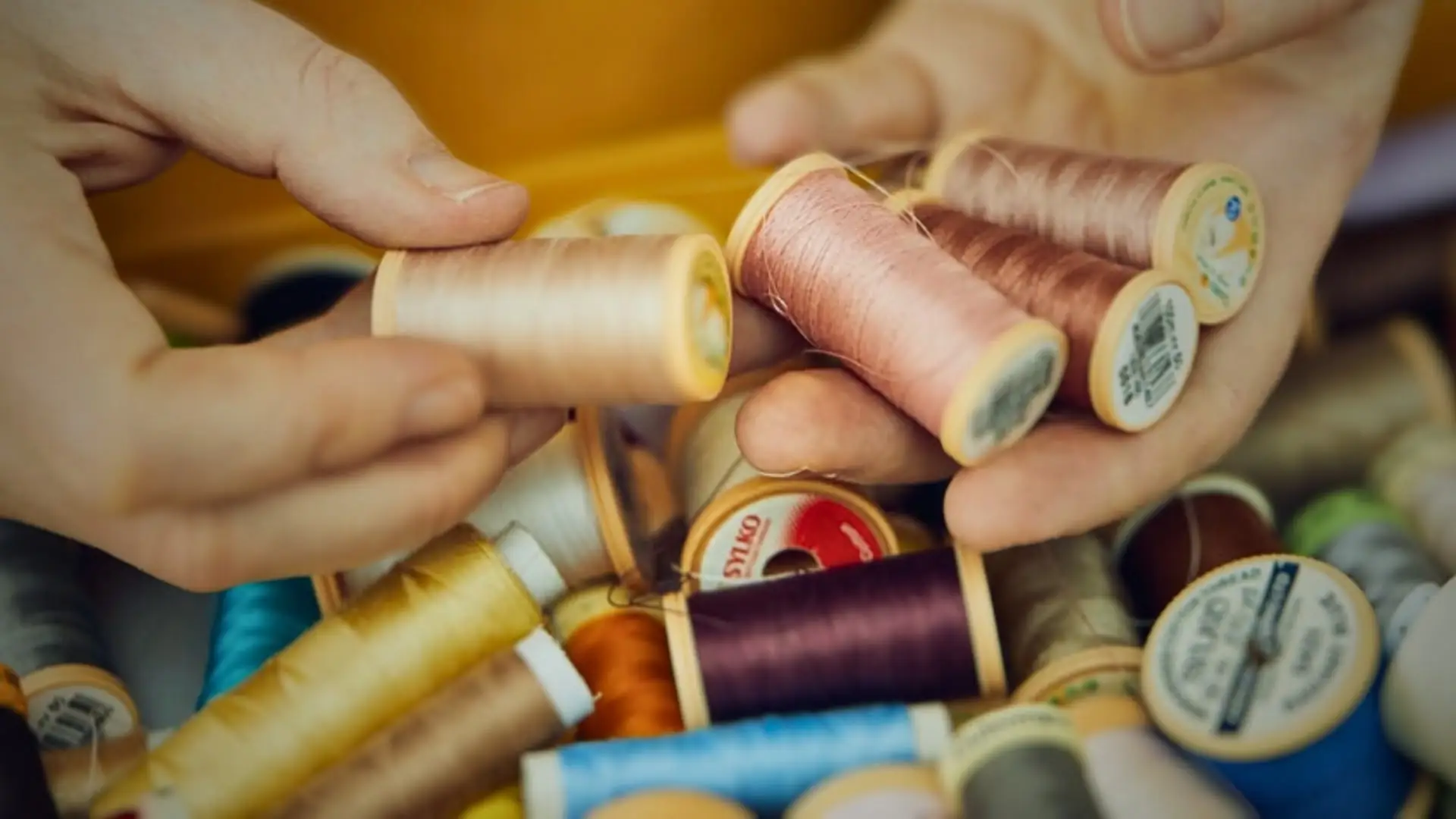
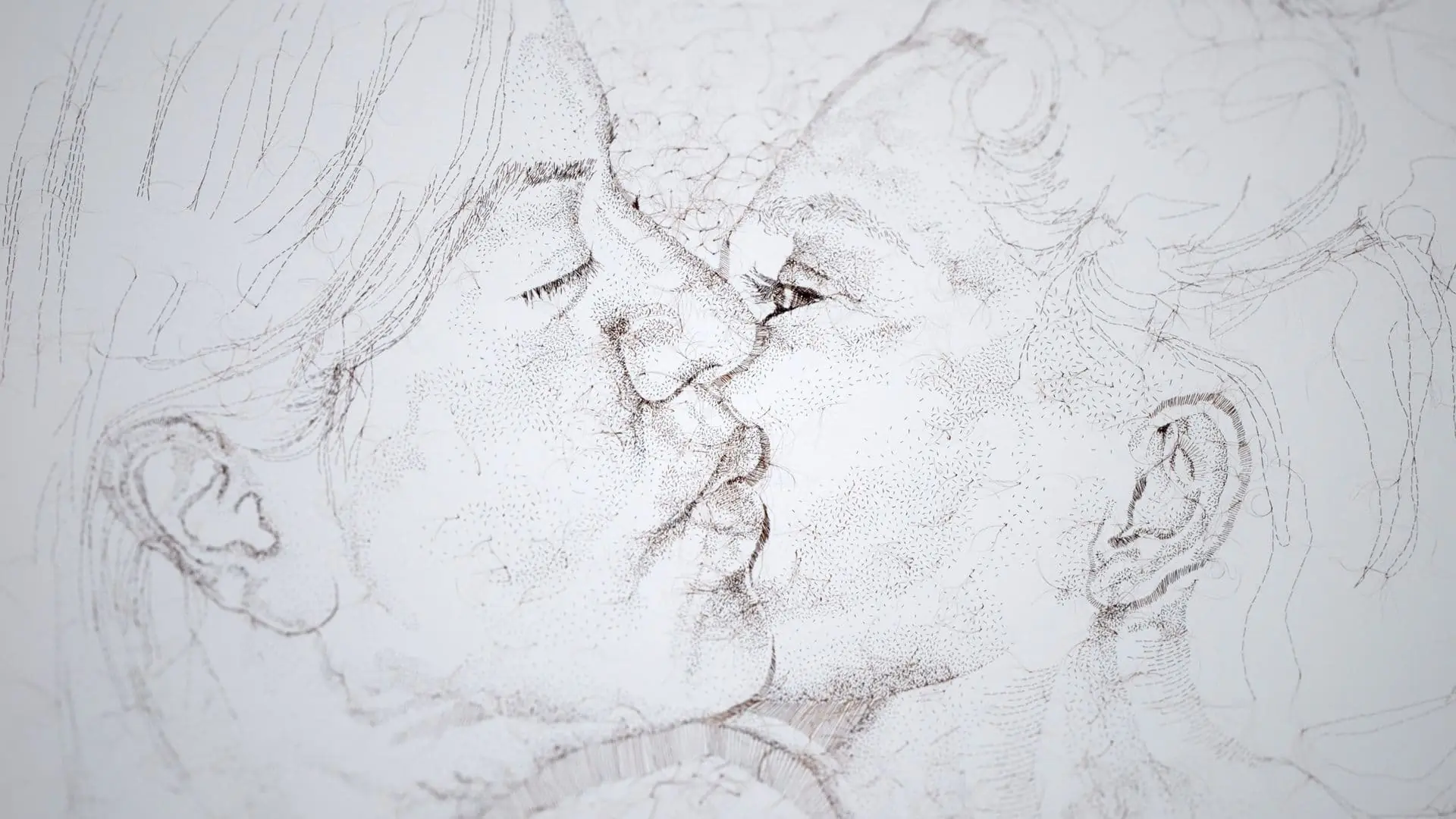
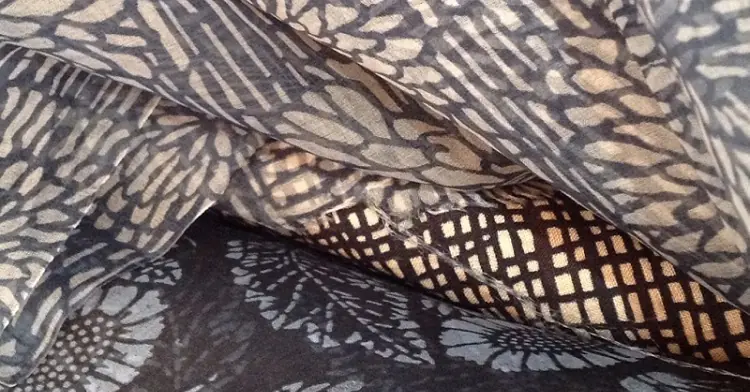
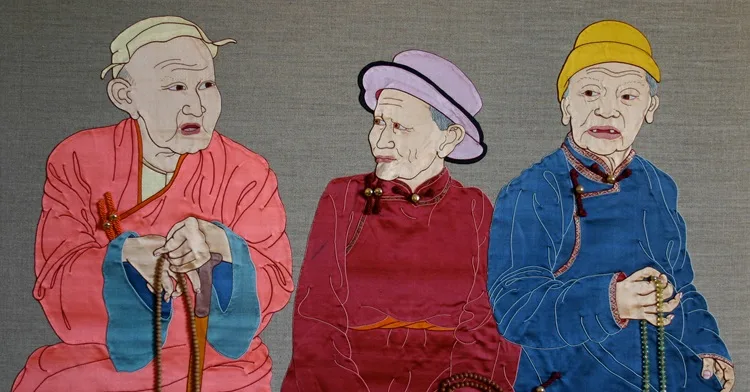
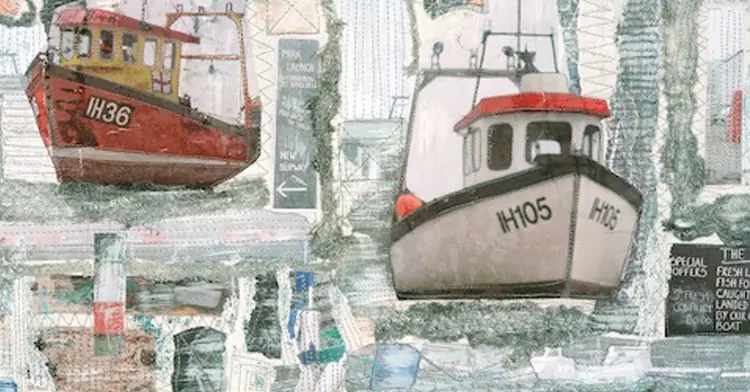
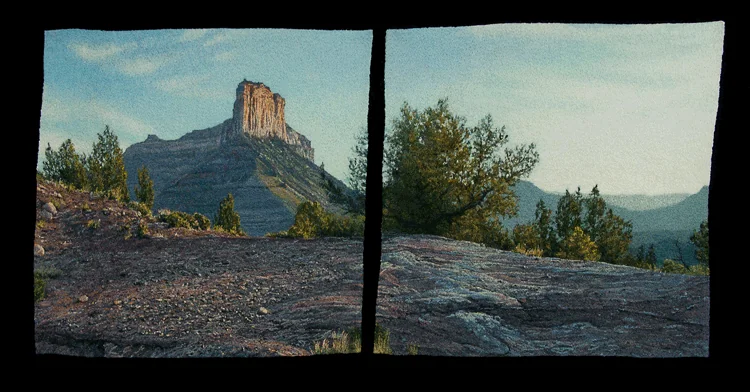
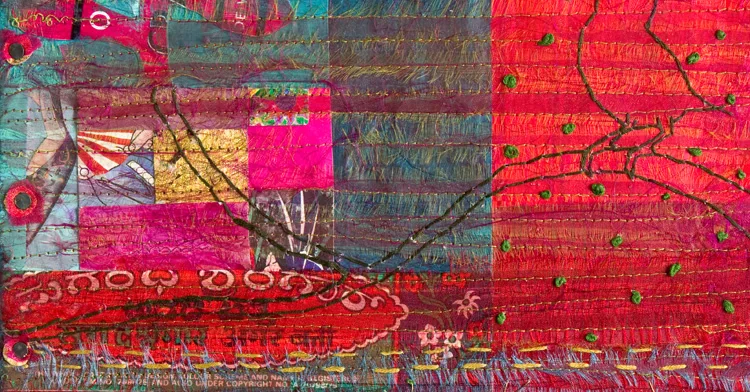
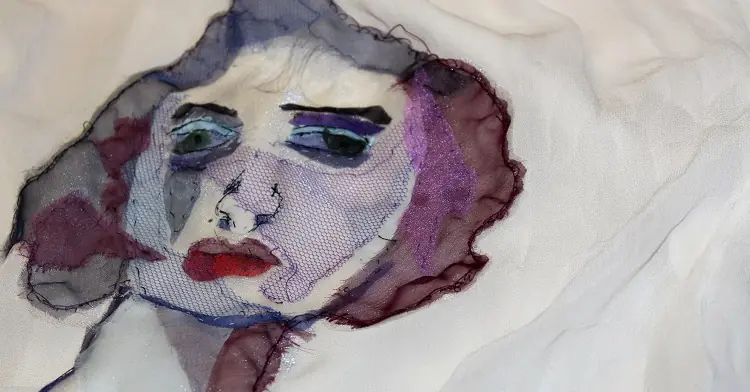
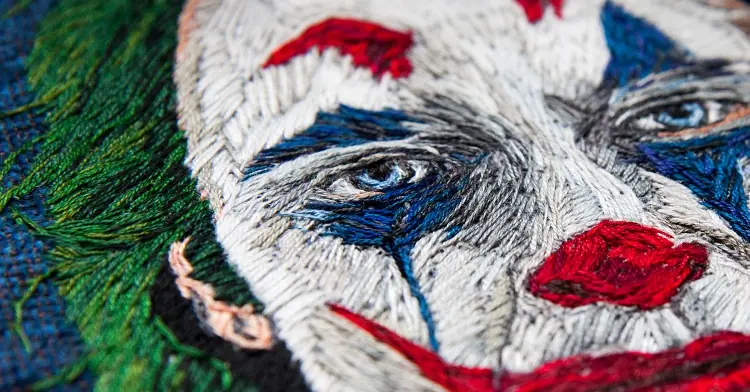
30 comments
colleen kelly
As an identical twin, I’m at a loss of words other than “please hear me, please let me stay”. Thank you for sharing this profound love between identical twins who never gave up on each other.
Beverley scott
Lovely story
Eleanor Segal
Wow!!!
Jane Axell
This must be my favourite article on textileartist.org for it’s story of trials and tribulations, enduring love and patience, and wonderful happy ending. I am so pleased for Judith and Joyce that it all ended so well.
Leona Labuschagne
As the mother of two profoundly disabled children who still live with us (Anke, daughter, 42, and Markus, son, 40) my heart cramps for the parents who had to take such a heart-rending decision in that desolating era; and for Judy who had to live such a fearfully joyless life for so many years.
BRAVO, JOYCE!
Leona Labuschagne, South Africa
Benjamin Eghan
a conceptual textile artist she was.none has limitations, we identify our true-self with time. thanks for sharing
Angela Rahui
Thank you for sharing this beautiful story of sisterly love and dedication.
Betty Leacraft
What a moving, inspiring article regarding the power of innate artistic expression as a means to heal one’s spirit.
Dot Moye
Thank you for this article – it is beautifully presented. I was introduced to Judith Scitt’s work some years ago by Barbara Lee Smith and have been following it since. I felt one of the finest recognitions of this work was in the last Venice Biennale (2017) where Scott’s work was placed adjacent to Sheila Hicks’ monumental installation.
Therese Stein
Thank you for this amazing and miraculous story of love and the resilience and triumph of the human spirit. Joyce made an heroic effort, ignoring all warnings and necessary personal sacrifices, to give her sister a happy and creative life for many years, and, not least, giving her the opportunity to make and leave this legacy of great art work.
Lynne Sward
From the moment I saw Judith’s striking and original fiber works several years ago, I was “hooked”. The American Visionary Art Museum in Baltimore exhibits all media created by artists (men and women), who have similar disabilities. Thank you for sharing this wonderful life of 2 loving women. I wonder how many people who are “physically or mentally challenged have extraordinary, latent talents as Judith? Perhaps, some organization could start a search and put together a traveling exhibit of these gifted men and women?
vicki miller
A wonderful, touching story
Lorna Morrison
Thank you for bringing this story of amazing lives to a wider public. It is very moving. So sad that lives could be so torn apart, I had an uncle with Downs and I know my grandfather felt the shame of having such a son, yet he lived at home with his parents until his mother died, and helped them at home as they got older.
Maureen masterman
I came across Judith’s work whilst doing some research a few years ago and just missed out on seeing her work exhibited in London. This is an amazing story and just shows how the creative process can release something inside someone. Joyce did an amazing thing in looking after her sisters wellbeing too and now there is an amazing legacy left behind with Judith’s work.
rita briguglio
WOW what a beautiful story. I have worked with people mentally challenged. It is amazing what crayons, paint and paper can do to free the tangled spirit.
Christine
What a beautiful story – love always wins in the end!
Mireille Fruin
Buckets of tears, and my lesson as a humble amateur to just do your thing taking it straight from the source and bring it into existence. Bless the two sisters.
Mireille
Jay Stannard
Certainly a tragic story when the twins were separated only to become wonderful in the end. It is too easy to condemn the parents for separating the girls. They wanted to do the right thing; they did what they thought was the right thing; what they were told was the right thing; they did what was the most painful of all the choices available to them. I cannot imagine the pain they felt, for ever.
Mireille, I’m not sure if you were a Dutch language student in Brussels in 1968 or not, but your name, like mine is rather unique. If you are, it would be nice to talk about those days and the water under the bridge since. They won’t give you my email address from this site, so I’ll try to find another way. I hope all is well and has been well with you. Jay
Lindsay
Thank you for sharing this. It is a humbling, heart-breaking and inspiring story.
Raine Phillips
Just loved this story of two sisters dedicated to each other, both with their own talents.
Cas Holmes
Fabulous interview recognising talent wherever it lay. Love Judith’s work and her love for her work. I trained in the Community Arts setting after graduation and worked freelance in areas of social care, education and in the hospital setting. Creative health is of value in all areas of life. It was my great privilege to learn as much from these interactions as much as I shared.
Dennis Morris
For the last 19 years of a 35 year career teaching art I had the wonderful opportunity to work with students like Judith. I was inspired by their determination and courage. Congratulations to the author of this article for their gentle use of language. My niece followed in my footsteps with training as an art therapist who currently works in a setting similar to what Judith did when her interest in art making was encouraged. Thank you for this beautiful article.
Caz
If such inate talent was hidden inside this amazing woman, who else through being so restricted by social convention, hides similar extraordinary abilities. I am both humbled and inspired by this story. Judith has set a high bar for us to aim for.
Sally Adler
I’ve seen brief ‘human interest’ coverage of this story in the past, but nothing has moved me as this piece did. Oh, Joe! thank you. I am inspired.
marga marcos pascual
Sinceramente conmovida por esta trágica y bella historia, sólo puedo decir que la Vida es mágica y el Amor es creador. Aquí está la prueba con estas dos hermanas.
jane at the flight platform
as a textile artist who is also a mother of a daughter with smith magenis syndrome and also another daughter very very close in age…this absolutely broke my heart to read and moved me to tears! I am so thankful to you for letting me know this amazing story! xxxxx
Debbie Ashurst
Deepy, deeply moving story, thank you for sharing it. Didn’t know Judith’s work, but am so glad I do now.
Rachel Horne
I was very touched by this story. I wasn’t familiar with Judith’s work but i’m very happy to know about it now…thanks for introducing it to me – Rachel.